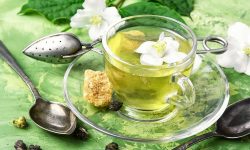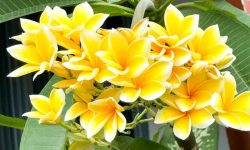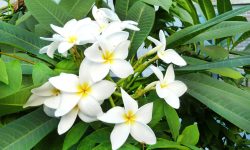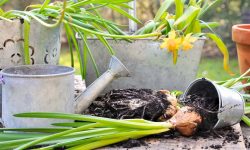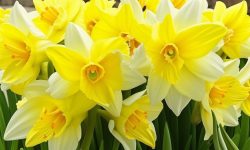Kalanchoe plants add color and charm to any home with their clusters of vivid, long-lasting flowers. These succulents are simple to care for and thrive both indoors and outdoors. Their compact size and bright blooms make them a favorite choice for windowsills and tabletops. What makes them fascinating is how their flowering depends on light and temperature changes. Knowing this rhythm helps you enjoy their blossoms for many months.
If your Kalanchoe has stopped blooming, it doesn’t mean it’s unhealthy. The plant simply needs the right conditions to start again. With proper light exposure, a short resting period, and careful watering, it can bloom several times a year. This guide reveals when Kalanchoe plants bloom, how to encourage reblooming, and what care methods keep them healthy and colorful year-round. With the right approach, you can enjoy a thriving, blooming Kalanchoe in every season.
Understanding the Kalanchoe Bloom Cycle
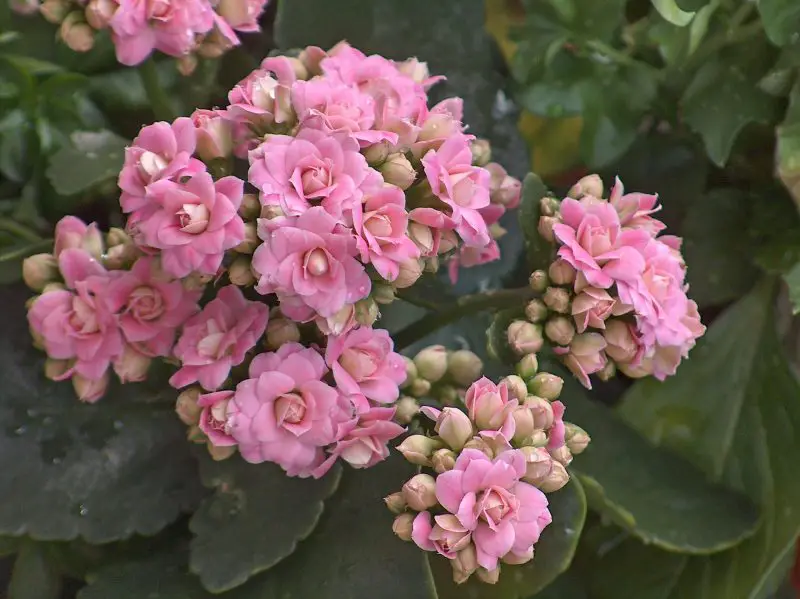
Kalanchoe plants have a fascinating bloom cycle that follows changes in daylight and temperature. They are short-day plants, which means they begin forming buds when the nights are long and the days are short. In their native habitats of Madagascar and tropical Africa, this usually happens in late fall through early winter. The shorter daylight hours act as a natural signal, telling the plant that it’s time to focus on reproduction. For indoor gardeners, this process can be recreated by controlling light exposure to about 8 to 10 hours per day for several weeks. Doing so encourages the plant to develop its colorful clusters of flowers.
Once buds begin to form, Kalanchoe needs steady warmth, moderate humidity, and bright but indirect sunlight. During this stage, consistent care is vital for healthy development. Too much water can cause root rot, while too little light may result in small or pale blooms. Each flower cluster can last for several weeks or even months under good conditions. This extended bloom time makes Kalanchoe one of the most rewarding houseplants. Fertilizing lightly with a balanced formula once a month helps sustain the plant’s energy and supports continuous flowering.
After the blooms fade, Kalanchoe naturally enters a resting phase. Many new growers mistake this dormancy for decline, but it’s a crucial recovery stage. During rest, the plant stops producing flowers and redirects nutrients toward leaf and root growth. This rebuilding period usually lasts six to eight weeks. Reducing watering and avoiding fertilizer during this time allows the plant to regain strength. Once it has rested, the blooming cycle can start again with proper light reduction. Understanding this pattern helps you time the seasons of color perfectly and enjoy a blooming Kalanchoe almost all year long.
What Triggers Kalanchoe to Bloom
Kalanchoe plants bloom in response to a combination of light duration, temperature, and care routine. The most important trigger is the amount of daylight they receive. Because they are short-day plants, they need long periods of darkness to start forming flower buds. Usually, giving them around 14 hours of complete darkness each night for four to six weeks helps initiate blooming. This process mimics the natural conditions of late autumn and winter in their native habitat. Any exposure to artificial light during the dark period can delay or stop flower formation, so keeping them in a dark, uninterrupted space during this stage is crucial.
Temperature also plays a strong role in triggering blooms. Kalanchoe thrives best when daytime temperatures stay between 65°F and 75°F and nighttime temperatures drop slightly to around 60°F. This small difference between day and night helps signal the plant that a seasonal change is coming, encouraging bud development. Constant warmth or cold drafts can interrupt this signal, leading to slow or uneven flowering. Alongside temperature, humidity levels should remain moderate. Extremely dry air can cause flower buds to dry out, while excess moisture can lead to fungal issues or soft stems that prevent healthy blooming.
The final factor is plant care before and during the bloom cycle. Proper rest, pruning, and feeding routines help ensure strong and repeated flowering. After each bloom, removing spent flowers allows the plant to focus energy on new growth. Regular but careful watering keeps the roots healthy and prevents stress that could stop blooming altogether. Fertilizing lightly with a potassium-rich mix every few weeks can enhance flower color and size. With these conditions balanced, the Kalanchoe will not only bloom reliably but can also produce multiple flower cycles each year. Understanding these triggers gives you full control over your plant’s flowering schedule and ensures vibrant, long-lasting blossoms.
The Natural Blooming Season of Kalanchoe
In its natural environment, the Kalanchoe’s blooming season follows the rhythm of sunlight changes throughout the year. These plants usually begin to form buds in late fall when daylight becomes shorter and nights grow longer. As the plant senses these seasonal shifts, it starts preparing for flowering during the cool months of winter. The actual blooms often appear from late winter through early spring, depending on the variety and growing location. In tropical regions, Kalanchoe may bloom slightly earlier because of warmer temperatures and stable humidity. This natural timing allows the plant to take advantage of the mild sunlight and cooler air, which helps the flowers last longer.
Indoor Kalanchoe plants follow a similar pattern, though they can be influenced by artificial lighting and room temperature. Many people notice their plants bloom around the same time every year without extra effort, as household light patterns often mimic natural daylight cycles. However, consistent exposure to indoor lights at night can confuse the plant’s internal rhythm and delay flowering. To help indoor Kalanchoe bloom on schedule, limit artificial light after sunset during the fall months. By doing so, you can encourage the plant to sense shorter days and trigger its natural blooming process.
With the right indoor conditions, you can even adjust or extend the natural blooming season. Many growers use the “light control method,” where they manually adjust day and night lengths using covers or dark rooms. By providing several weeks of long nights and shorter days, you can make the plant bloom outside its usual season. When combined with proper feeding and care, this technique allows the Kalanchoe to flower two or even three times a year. Knowing its natural rhythm and learning how to guide it helps you enjoy colorful blooms throughout every season.
How to Encourage Reblooming Indoors
Encouraging a Kalanchoe to rebloom indoors requires patience, timing, and the right environment. After the first bloom fades, the plant needs a rest period to restore its strength. During this time, you should remove all spent flowers and slightly reduce watering. This resting phase usually lasts about six to eight weeks, allowing the plant to store energy in its leaves and stems. Keep it in a bright spot but avoid direct sunlight, which can stress the plant during recovery. Once new leaves start to appear, it’s a sign that the Kalanchoe is ready for the next flowering cycle.
To trigger new blooms, you must recreate the natural conditions that signal the plant to flower. Begin by reducing light exposure to about eight to ten hours a day while ensuring it gets complete darkness for the remaining hours. This can be done by placing it in a dark room or covering it with a lightproof box every evening. Continue this schedule for at least four to six weeks. During this period, maintain temperatures between 60°F and 70°F, and avoid sudden drafts. Too much artificial light during the night can interrupt the cycle, so be consistent with the darkness routine. Once buds start to form, return the plant to a brighter spot to support healthy flowering.
Regular feeding and watering during this stage help promote vibrant, long-lasting blooms. Use a balanced fertilizer with a slightly higher phosphorus content every two to three weeks to encourage more buds. Avoid overwatering, as soggy soil can cause root damage and prevent blooming. Trimming old stems after each bloom cycle also helps direct energy to new growth. By following this process, your indoor Kalanchoe can bloom multiple times a year, filling your home with bright clusters of flowers in every season.
Light Requirements for Healthy Blooms
Light is the most critical factor that determines how well your Kalanchoe blooms. These succulents thrive in bright, indirect sunlight for at least six hours a day. Too little light results in weak, leggy growth and few or no flowers, while too much direct sunlight can scorch the leaves and cause blooms to fade quickly. The ideal location is near a sunny east- or west-facing window with filtered light. If natural sunlight is limited, you can supplement with a grow light positioned about 12 inches above the plant. This consistent brightness helps the leaves stay firm, green, and ready to support heavy clusters of flowers.
Kalanchoe also depends on day length to regulate its blooming cycle. It is a short-day plant, meaning it needs long nights and shorter days to start producing buds. For best results, give your plant around eight to ten hours of light and 14 to 16 hours of complete darkness each day for about six weeks. Even small amounts of artificial light during the dark period can disrupt this cycle and delay flowering. During the active blooming stage, return the plant to bright light so the buds can open fully and maintain their color for several weeks. Stability in light exposure ensures that the plant continues to flower regularly throughout the year.
Rotating your Kalanchoe every few days helps it grow evenly and prevents stems from leaning toward the light. Keep windows clean to maximize sunlight, and avoid moving the plant too often, as sudden changes in lighting can stress it. When provided with the right amount of light and darkness, your Kalanchoe will reward you with strong stems, glossy leaves, and abundant, long-lasting blooms that brighten your space in every season.
Temperature and Humidity Effects on Flowering
Temperature and humidity play a crucial role in determining how well Kalanchoe plants bloom. These succulents thrive in warm, stable environments similar to their native tropical regions. The ideal temperature range for Kalanchoe is between 65°F and 75°F during the day, with slightly cooler nights around 60°F. This small drop in temperature helps trigger flower formation and supports healthy bud development. If temperatures fall below 50°F, the plant can become stressed, leading to leaf drop and delayed flowering. Similarly, constant exposure to heat above 80°F can cause wilting and early fading of blooms. Maintaining stable temperatures without drastic fluctuations ensures long-lasting, colorful flowers.
Humidity also affects Kalanchoe’s overall health and blooming ability. Although the plant prefers drier air compared to many tropical species, extremely low humidity can cause buds to dry and fail to open. The ideal humidity range is between 40% and 50%. In overly dry environments, you can place a shallow tray filled with water and pebbles near the plant to gently raise humidity levels. Avoid misting the leaves, as too much surface moisture may lead to fungal spots or mildew. Keeping good airflow around the plant is equally important to prevent mold and rot.
Seasonal changes can influence both temperature and humidity indoors. During winter, heating systems tend to dry the air, while in summer, high humidity can encourage fungal growth. Move your Kalanchoe to a well-ventilated area away from air conditioners and heaters to maintain balance. Providing consistent conditions—warmth, airflow, and moderate humidity—helps the plant produce stronger stems and vibrant blooms. When these environmental factors remain steady, your Kalanchoe will reward you with rich, long-lasting flowers throughout the year.
The Importance of Rest Periods Between Blooms
Rest periods are essential for Kalanchoe plants to maintain strong growth and consistent blooming. After a full flowering cycle, the plant uses much of its stored energy to produce blossoms. Without a proper recovery phase, it becomes weak and may fail to bloom again. The rest period allows the plant to rebuild its energy reserves and focus on leaf and root development. During this time, reduce watering and stop fertilizing so the plant can naturally slow its growth. Place it in a bright but indirect light location and maintain moderate indoor temperatures. This calm phase usually lasts six to eight weeks and prepares the Kalanchoe for its next round of blooms. Skipping this rest period often results in fewer flowers and smaller buds in future cycles.
During rest, it’s important to observe your plant’s condition. The leaves should remain firm and slightly glossy, indicating good hydration and health. If the foliage starts to wilt or turn dull, you may need to water lightly to keep the roots from drying out. Avoid overwatering, as the plant’s metabolic activity is lower during rest. It’s also a good time to prune away any leggy or weak stems to encourage compact and balanced growth. Trimming helps the plant channel nutrients efficiently when it resumes active growth. Cleaning the leaves gently with a soft cloth can also improve photosynthesis and help the plant recover faster.
As new leaves begin to appear, you’ll notice the plant’s energy returning. This is the best sign that your Kalanchoe is ready to begin its next blooming cycle. You can then start providing more light and resume a regular watering schedule. Feeding with a balanced fertilizer can further boost flower production. Respecting this natural rhythm ensures long-term health and beauty for your Kalanchoe. A well-rested plant will always produce more vibrant, longer-lasting blooms, bringing life and color to your home for years to come.
Common Reasons Why Kalanchoe Fails to Bloom
Lack of Proper Light Exposure
One of the most common reasons Kalanchoe fails to bloom is insufficient or inconsistent light exposure. This succulent needs a clear balance between bright daylight and long, uninterrupted darkness to trigger flowering. When grown indoors, many plants receive too little sunlight or are exposed to artificial lighting late into the evening. These conditions confuse the plant’s natural rhythm and prevent buds from forming. Ideally, Kalanchoe should get about eight to ten hours of bright, indirect light each day, followed by 14 to 16 hours of complete darkness for four to six consecutive weeks. This cycle mimics the natural change in daylight that signals blooming.
If your Kalanchoe only receives light from one direction, it may grow unevenly and put more energy into leaf production rather than flowers. Rotating the pot every few days helps the plant develop evenly. Keep it near a sunny window during the day, but avoid harsh afternoon sunlight, which can burn the leaves. Maintaining this balance between light and darkness is crucial for healthy blooming. Once buds appear, consistent exposure to bright light will help them open fully and retain their color longer.
Overwatering and Poor Soil Drainage
Overwatering is another major reason Kalanchoe stops blooming. Although this plant enjoys regular moisture during its active phase, it cannot tolerate soggy soil. When water accumulates around the roots, it limits oxygen flow, leading to rot and nutrient loss. As a result, the plant becomes weak and unable to produce flowers. Kalanchoe prefers well-draining soil, such as a cactus or succulent mix, that allows excess water to flow out easily. Always check the soil before watering—if the top inch feels dry, it’s safe to water again. Using a pot with drainage holes is essential for preventing water buildup.
During cooler months or resting periods, the plant’s water needs decrease significantly. Continuing to water as frequently as during active growth can cause root damage and leaf drop. Inconsistent watering, alternating between drought and excess moisture, also stresses the plant and disrupts its blooming cycle. It’s better to water deeply but less often, ensuring the soil dries between sessions. Healthy roots are the foundation of vibrant flowers, and proper watering practices are key to maintaining strong, repeat blooms.
Skipping the Rest Period
Many gardeners unknowingly skip the Kalanchoe’s natural rest period, expecting it to bloom continuously. After flowering, the plant needs time to recover and rebuild its stored energy. If this recovery phase is ignored, the plant will produce only weak foliage or none at all. Reducing watering, withholding fertilizer, and providing bright but indirect light during the rest stage are vital steps in the process. Allowing the plant to rest for six to eight weeks gives it the strength needed for another round of flowering. Without this pause, the Kalanchoe becomes exhausted and struggles to generate new buds.
Signs that your Kalanchoe needs rest include fading blooms, slower growth, or soft leaves. Do not try to force new buds by adding more fertilizer or increasing light exposure. These efforts can stress the plant and damage its natural rhythm. Once the rest period ends and new leaves emerge, you can gradually return to regular watering and feeding. Understanding and respecting this cycle helps the plant remain strong and ensures vibrant blooms each season.
How to Extend the Blooming Period
Extending the blooming period of your Kalanchoe requires a careful balance of light, water, and nutrients. Once the plant starts flowering, place it in a bright area with plenty of indirect sunlight to help the blooms stay open longer. Avoid placing it in direct, harsh sunlight, as this can cause flowers to fade or dry out quickly. During blooming, maintain consistent temperatures between 65°F and 75°F and avoid sudden drafts or cold air. Stable conditions prevent bud drop and help prolong the life of the flowers. It’s also important to remove faded blooms regularly. Deadheading not only improves the plant’s appearance but also encourages the growth of new buds. Pruning back leggy stems after each bloom cycle keeps the plant compact and helps it focus energy on fresh flower development.
Watering habits strongly affect how long Kalanchoe blooms last. During flowering, the plant needs consistent moisture, but the soil should never be soggy. Allow the top inch of soil to dry out between waterings, and empty any excess water from the saucer to prevent root rot. Overwatering can shorten the blooming period, while underwatering may cause buds to wilt or drop prematurely. Feeding the plant with a diluted, phosphorus-rich fertilizer every two to three weeks helps sustain blooming and strengthens the stems that hold the flowers. Keeping the humidity moderate, around 40% to 50%, also prevents flowers from drying too quickly, especially in air-conditioned or heated environments.
Light exposure after flowering also determines how quickly the plant can produce new buds. Once the first blooms fade, continue providing bright light for at least eight hours a day to support leaf health and recovery. Gradually reduce watering to prepare the plant for its short rest period before the next bloom. If you maintain a stable environment, your Kalanchoe can continue to bloom for several months, and with proper care, it may even flower again within the same year. The key to extended flowering lies in consistency—steady light, balanced watering, and timely pruning. By following these practices, you’ll enjoy bright, cheerful blooms for much longer than the typical flowering season.
Fertilizing Tips for More Frequent Blooms
Keeping Kalanchoe blooming year-round requires adapting its care routine to the natural rhythm of the seasons. During spring and summer, the plant enters its growth phase, focusing on producing new leaves and storing energy for upcoming blooms. Place it in a bright location with six to eight hours of indirect sunlight daily. Water regularly but let the top inch of soil dry before watering again. Overwatering can weaken roots and reduce future flower production. Fertilize every two to three weeks with a diluted, balanced fertilizer to strengthen the plant and support steady growth. Trim back faded blooms and long stems to encourage new branching and compact, healthy growth that prepares the plant for the next blooming cycle.
As autumn approaches, adjust your routine to prepare Kalanchoe for flowering. Reduce watering slightly and begin simulating shorter days and longer nights. Limit light exposure to eight to ten hours a day and provide 14 to 16 hours of complete darkness for about six weeks. This pattern mimics natural fall conditions, signaling the plant to start forming buds. Keep indoor temperatures between 60°F and 70°F for best results. Avoid moving the plant or exposing it to drafts, as changes in environment can delay blooming. Once buds begin to form, place the Kalanchoe back in bright light to help flowers open fully and maintain their vivid color throughout the blooming season.
In winter and early spring, focus on stability and gentle care. Maintain consistent light, moderate watering, and temperatures around 65°F. Keep the plant away from direct heat or cold windows. When blooms fade, prune back flower stems and let the plant rest for several weeks. This recovery period restores its strength for another bloom cycle. By making simple, seasonal adjustments, you can keep your Kalanchoe healthy, productive, and covered in beautiful flowers throughout the year.
Seasonal Care and Adjustments for Year-Round Flowers
Caring for Kalanchoe throughout the year requires adjusting its routine to match seasonal changes. In spring and summer, the plant is in its active growth phase, developing new leaves and preparing for future blooms. Place it near a sunny window where it can receive six to eight hours of bright, indirect light daily. Water the plant regularly but allow the top inch of soil to dry before watering again. Overwatering can cause root problems and weak stems. During these warmer months, feed the plant every two to three weeks with a diluted, balanced fertilizer to encourage strong foliage and healthy root growth. Regular pruning after each bloom keeps the plant compact and directs energy toward new buds, ensuring steady growth throughout the season.
As autumn arrives, the Kalanchoe begins to shift from growth to its blooming phase. To trigger flower development, recreate its natural environment by shortening its daylight hours. Give it eight to ten hours of light each day, followed by 14 to 16 hours of total darkness for about six weeks. This change signals the plant to form buds. Keep the temperature between 60°F and 70°F, avoiding cold drafts or sudden heat changes. Reduce watering slightly and hold off on fertilizing until buds start to appear. Once you see flower clusters forming, return the plant to its bright location to help them mature and open fully.
During winter and early spring, Kalanchoe reaches its peak blooming period. Maintain consistent temperatures and bright, indirect light to support long-lasting blooms. Avoid placing the plant near heaters or cold windows, as extreme conditions can shorten flower life. After the blooms fade, trim off spent stems and let the plant rest for six to eight weeks. By adjusting light, watering, and feeding habits with each season, you can maintain a continuous rhythm of healthy growth and colorful blooms all year long. With steady care, your Kalanchoe will reward you with vibrant flowers season after season.
FAQs About Kalanchoe Blooming
How often does Kalanchoe bloom each year?
Kalanchoe usually blooms once or twice a year. With proper lighting and rest periods, it can bloom two or even three times indoors. Controlling day length and providing consistent care help maintain this cycle. Each bloom can last several weeks under good growing conditions.
How long do Kalanchoe flowers last?
Kalanchoe blooms last about six to ten weeks. Cool temperatures, bright indirect light, and proper watering extend their lifespan. Remove faded blooms to encourage new buds. Consistent feeding and humidity help flowers remain fresh and colorful throughout the blooming period.
Why are my Kalanchoe’s buds falling off before blooming?
Bud drop often occurs due to stress from temperature changes, low light, or overwatering. Keep the plant in stable conditions with bright indirect sunlight. Maintain even moisture, avoid drafts, and ensure good airflow to prevent premature bud loss before blooming.
Should I cut back Kalanchoe after flowering?
Yes, pruning after flowering promotes healthy regrowth and future blooms. Remove dead flowers and trim long stems to keep the plant compact. Use clean scissors to cut above leaf nodes. Allow the plant to rest before resuming normal watering and feeding.
Can Kalanchoe bloom in low light conditions?
Kalanchoe needs bright, indirect sunlight for six hours daily to bloom well. Low light leads to weak stems and poor flowering. Use a grow light if natural light is insufficient. Proper lighting ensures vibrant blooms and strong, healthy leaves all year.
Conclusion
Kalanchoe is a truly rewarding plant that brightens any space with its vivid, long-lasting blooms. Understanding its natural rhythm—light, temperature, rest, and care—helps you enjoy flowers year-round. With consistent attention, proper lighting cycles, and balanced watering, your Kalanchoe will thrive beautifully. Each bloom becomes a reflection of your care and patience, turning this hardy succulent into a lasting source of color and joy. Whether you’re an experienced grower or a beginner, following these simple principles ensures your Kalanchoe continues to bloom season after season, bringing life and beauty into your home.

